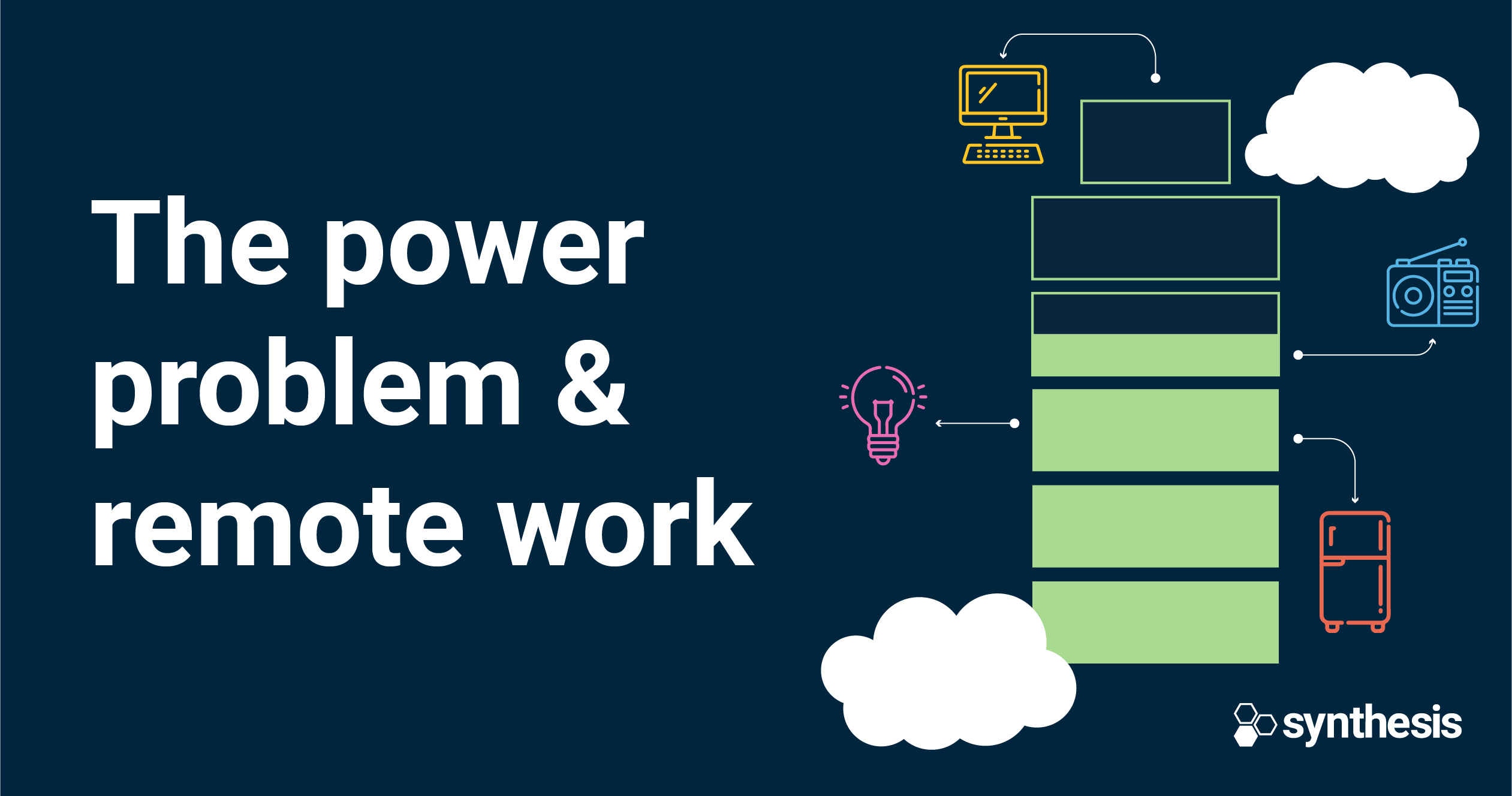By Rodney Ellis, Synthesis Service manager
With winter just around the corner and Eskom not being able to provide enough power to the country, there is not a lot of hope for a stable remote working environment.
The anxiety that one little notification can produce in a team – stage 4 loadshedding has started – can have a severe impact, not just on the project but the quality of life of the individual and family.
But there is hope – it’s the largest fusion reactor in our solar system and it generates enough energy in one hour to power the planet for a year.
With the price of solar panels and battery backup per KW/h decreasing year on year, it has become a very viable option to start transitioning away from fossil fuel dependencies and Eskom.

Now some average statistics, and real-life metrics:
The average South African home uses about 30kW in a 24-hour cycle, where your geysers consume about a third of the total usage per day.
Your largest consumers of power are any appliance with a heating element. They can go as high as 2,5kW.
Some actual statistics:
Selecting a random day in the house with 3,2kW solar array, 5kW pure sine inverter and a 5kW battery backup.
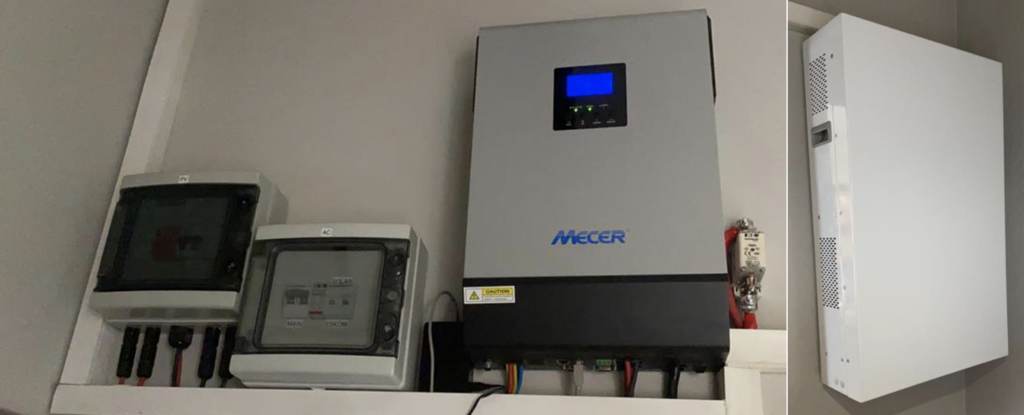
Home Power usage in W
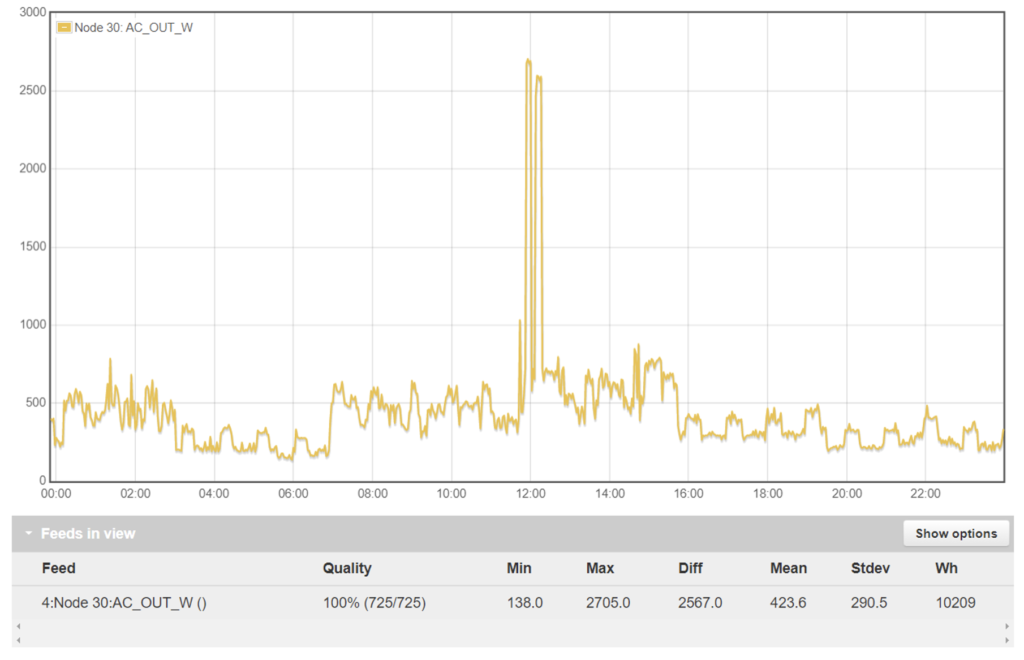
Solar generation in W
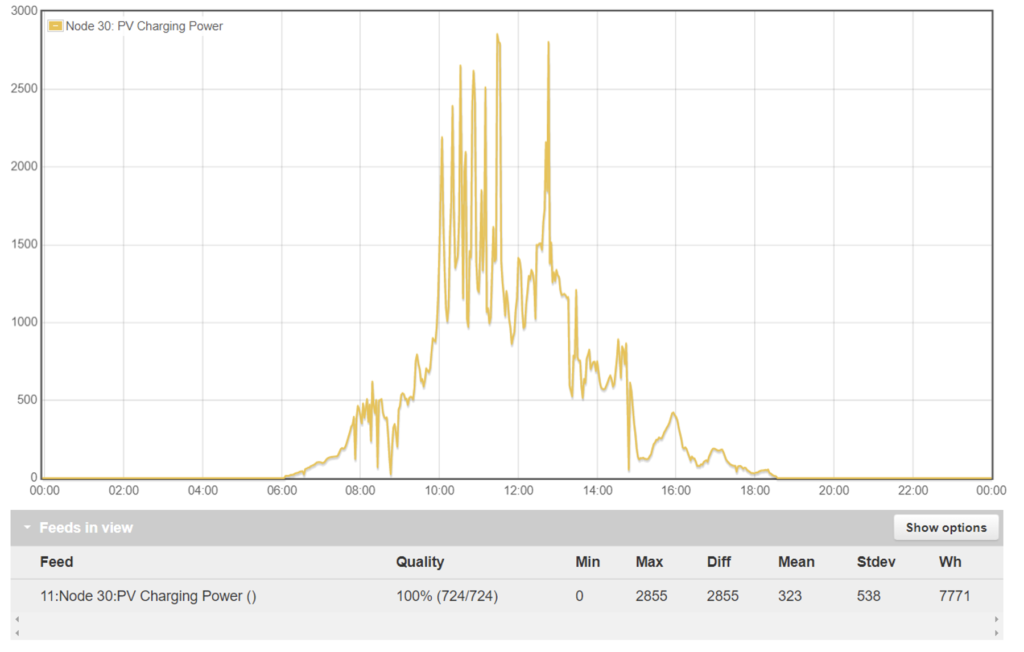
From the above graphs seen, I average 400W with spikes when running some appliances. I have set the lithium-ION battery to charge to 80% and drain to 20% that should give me about 6000 cycles before I would need to start looking at replacing it, note 6000 cycles is where you charge and discharge the battery, giving you about +/- 16 years lifespan of the battery.
Battery Mode
The below graphs shows when I start running off solar and when I switch back to utility, starting from around 8AM to 10PM. The only power consumption from Eskom is the geyser.
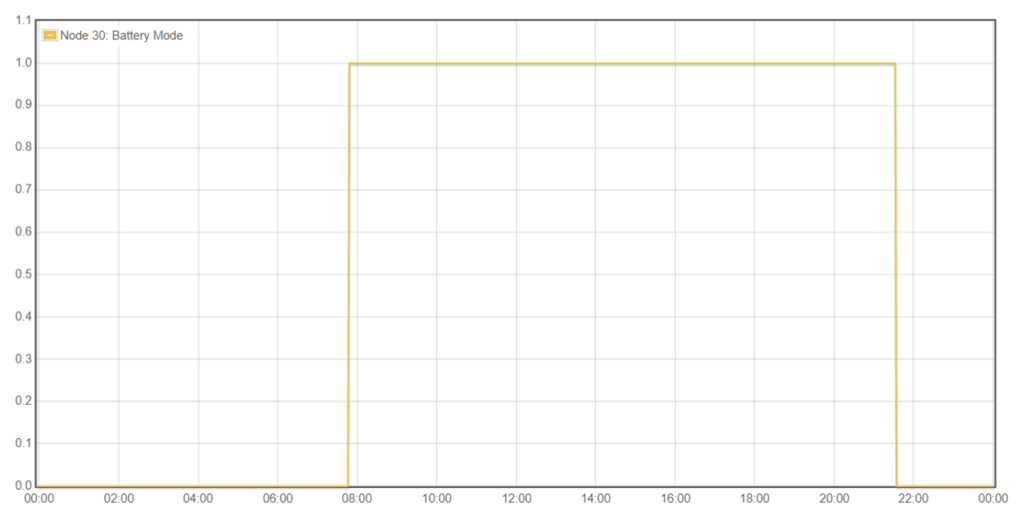
Solar Overview Dashboard
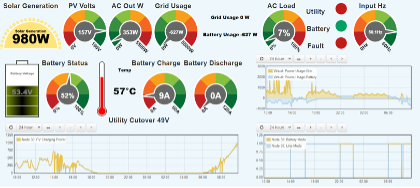
Where to start
Starting your journey to be more independent from the grid looks daunting and expensive, but it is not. There are several solar providers that can make the installation a breeze, the fisrt decision you will have to make is the size of the installation, inverter size, solar array and battery backup.
The nature solar is very modular where you can build out over time as your needs change, from adding additional panels, to expanding backup storage or even swopping out the inverter.
Considerations
- Peak output (Maximum wattage that will be drawn from the inverter)
- Devices connected (Fridge, freezer, kettle, microwave etc)
- Backup time (average power draw / battery size)
- Prepaid power (You would have to keep one relay on the DB board connected to Eskom to be able to recharge prepaid electricity)
For options and possible solutions and to just get a general idea of cost there are companies out there that are cheaper and more expensive.
Note. Cape Town, you will have to register your solar system with the city.
Small Kit
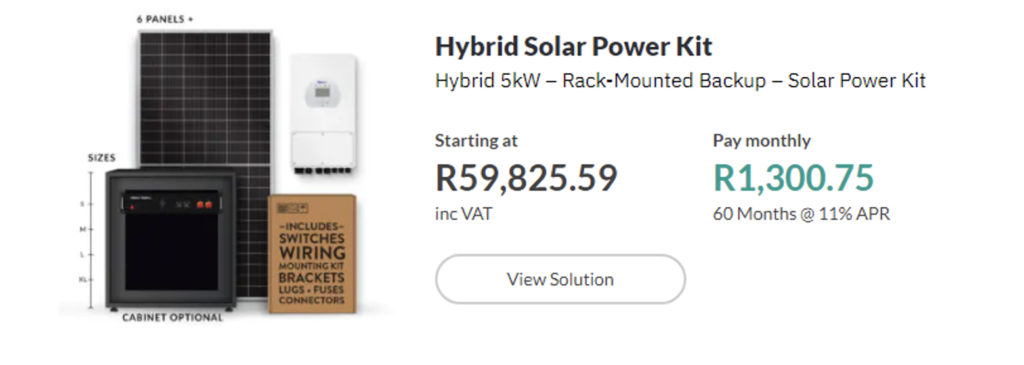
Large Kit
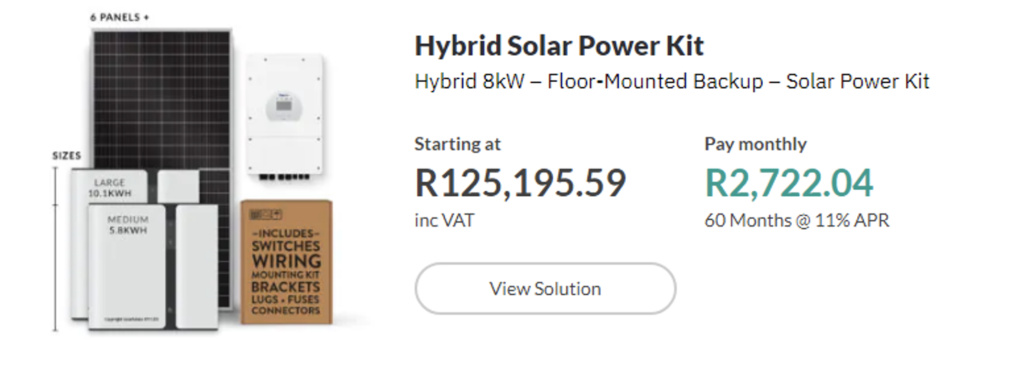
Remote kits – very remote kits

· Explorer 250 Portable Power Station Plug R6,500.00
What to do once your solar system has been installed? Nothing. They manage themselves and almost never require any interaction on your part.
The new normal
With remote work being the new normal and the ability to be able to work from anywhere, having access to reliable power and internet has become more important than ever. But, with the current state of power production in South Africa, this is not a guarantee.
With the uncertainty of reliable power comes challenges like not being able to work for extended periods of time, the anxiety of project deadlines and resolving incidents.
And just a general reduction in quality of life for your family, being able to provide reliable electricity using renewables mitigates alot of these issues and fears.
The new NEW normal is self-sustainability and private power production.
Personal experience.
The not so good
I have had the odd issue here and there. It has not been perfect as I was an early adopter, There was a bug on the inverter firmware that caused an overcharge on the battery that caused my house to reboot once or twice a day (fixed with firmware patch).
When loadshedding got bad we drained the battery completely and it had to be jumped to reset the BMS (fixed with a setting change on the inverter).
The good
There is peace of mind in knowing that in case of a power outage or loadshedding you don’t have to worry if you can make dinner or have lights or just internet.
The reduction of your monthly electricity bill can average from R1200 a month to less than R400.
What I did notice is that you become more power conscious not by choice, but it was just a natural evolution to be more sustainable and make the renewables last longer.
This also significantly increases the property value.
In Closing
Going to solar with a battery backup was one of the best investments I have made from a long-term financial perspective. I now enjoy peace of mind and in general as a person who loves to tinker and build things, it has changed my life for the better.



